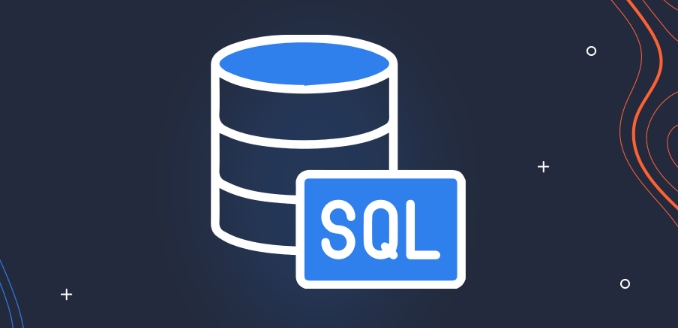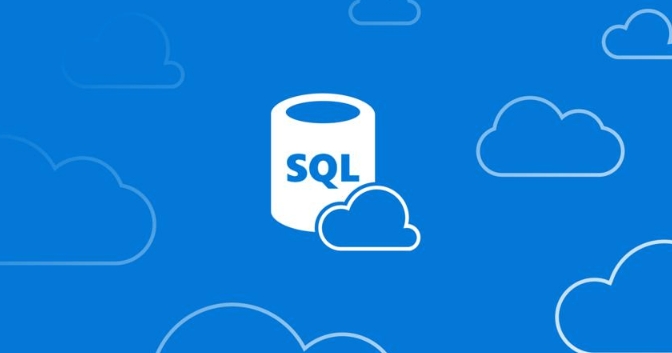The core role of SQL in the personalization engine is reflected in the structured extraction of user behavior data, the construction of user portrait tag systems, and real-time recommended data preparation. First, through SQL cleaning and aggregation of raw log data, features such as user clicks, page access type can be extracted; second, SQL batch calculation and update user tag tables to realize the definition of tags such as high-value users, technology enthusiasts, etc.; finally, through window functions or collaborative filtering pre-calculation, real-time feature and co-occurrence frequency data for recommendation models can be generated to support the efficient operation of personalized recommendation systems.

The core of a personalization engine is to understand user behavior and respond to it. SQL, as a basic tool for data query and operation, plays a crucial role in personalized systems. It can not only help us extract user characteristics and analyze behavioral paths, but also be used to build recommendation logic, labeling system and real-time feedback mechanism. The key is how to use SQL to support every link of the personalized process.

Structured extraction of user behavior data
Personalization engines rely on a large amount of user behavior data, such as clicks, browsing, purchases, etc. The role of SQL here is to clean and aggregate the original log data into available user behavior characteristics.
For example, we often need to count the number of clicks, page access, and time of stay in the past week. At this time, you can use SQL like this:

SELECT user_id, COUNT(*) AS click_count, ARRAY_AGG(DISTINCT page_type) AS visited_types, SUM(duration) AS total_time_spent FROM user_clicks WHERE event_time >= NOW() - INTERVAL '7 days' GROUP BY user_id;
Such queries can provide basic data support for subsequent recommended models. The key is to define the appropriate time window and aggregation dimension based on business needs.
Build a user portrait tag system
User portraits are usually the basis for personalized recommendations. We can use SQL to label batches, such as dividing user levels based on purchasing behavior and labeling interest based on browsing preferences.

A common practice is to define tag rules first, then batch compute and update the user tag table via SQL:
- High-value users: spending amount in the past 30 days > 1,000 yuan
- Technology enthusiast: I have viewed more than 5 technology articles in the past two weeks
- Active user: There are login records in the past 7 days and clicks more than 10 times
The corresponding SQL might look like this:
UPDATE user_profile SET user_level = 'high_value' WHERE user_id IN ( SELECT user_id FROM transactions WHERE purchase_time >= NOW() - INTERVAL '30 days' GROUP BY user_id HAVING SUM(amount) > 1000 );
This type of operation is usually performed regularly, such as running a batch task in the early morning every day to ensure that the user's portrait remains up to date.
Real-time personalized recommended data preparation
Although personalized recommendation systems may use machine learning models, SQL is still an indispensable tool in the feature engineering stage. We need to use SQL to build real-time or quasi-real-time feature data tables for recommended model calls.
For example, we can use window functions to obtain the content of the user's recent clicks as the recommended context feature:
SELECT user_id, item_id, event_time, LEAD(item_id, 1) OVER (PARTITION BY user_id ORDER BY event_time DESC) AS next_item FROM user_clicks WHERE event_time >= NOW() - INTERVAL '1 day';
This will extract data about the user's "what has recently been clicked" and "what may be interested in next" for training the recommended model or real-time recall strategy.
In addition, SQL can also be used to pre-calculate some coordinated filtering basic data, such as the co-occurrence frequency between products:
SELECT a.item_id AS item_a, b.item_id AS item_b, COUNT(*) AS co_occurrence_count FROM user_clicks a JOIN user_clicks b ON a.user_id = b.user_id AND a.event_time < b.event_time GROUP BY a.item_id, b.item_id;
This kind of data can be used as the basis for the logic of "buy and buy" or "read and watch" in the recommendation system.
Basically that's it. SQL is used in personalization engines much more than these scenarios, but the above mentioned directions are the most common and practical parts. It is not complicated, but it is easy to ignore details, such as the setting of the time window, deduplication logic, and control of data update frequency. As long as these details are handled clearly, SQL can well support the data needs of personalized systems.
The above is the detailed content of SQL for Personalization Engines. For more information, please follow other related articles on the PHP Chinese website!

Hot AI Tools

Undress AI Tool
Undress images for free

Undresser.AI Undress
AI-powered app for creating realistic nude photos

AI Clothes Remover
Online AI tool for removing clothes from photos.

Clothoff.io
AI clothes remover

Video Face Swap
Swap faces in any video effortlessly with our completely free AI face swap tool!

Hot Article

Hot Tools

Notepad++7.3.1
Easy-to-use and free code editor

SublimeText3 Chinese version
Chinese version, very easy to use

Zend Studio 13.0.1
Powerful PHP integrated development environment

Dreamweaver CS6
Visual web development tools

SublimeText3 Mac version
God-level code editing software (SublimeText3)
 How to find columns with a specific name in a SQL database?
Jul 07, 2025 am 02:08 AM
How to find columns with a specific name in a SQL database?
Jul 07, 2025 am 02:08 AM
To find columns with specific names in SQL databases, it can be achieved through system information schema or the database comes with its own metadata table. 1. Use INFORMATION_SCHEMA.COLUMNS query is suitable for most SQL databases, such as MySQL, PostgreSQL and SQLServer, and matches through SELECTTABLE_NAME, COLUMN_NAME and combined with WHERECOLUMN_NAMELIKE or =; 2. Specific databases can query system tables or views, such as SQLServer uses sys.columns to combine sys.tables for JOIN query, PostgreSQL can be used through inf
 What is the difference between SQL and NoSQL
Jul 08, 2025 am 01:52 AM
What is the difference between SQL and NoSQL
Jul 08, 2025 am 01:52 AM
The core difference between SQL and NoSQL databases is data structure, scaling method and consistency model. 1. In terms of data structure, SQL uses predefined patterns to store structured data, while NoSQL supports flexible formats such as documents, key values, column families and graphs to process unstructured data; 2. In terms of scalability, SQL usually relies on stronger hardware on vertical expansion, while NoSQL realizes distributed expansion through horizontal expansion; 3. In terms of consistency, SQL follows ACID to ensure strong consistency and is suitable for financial systems, while NoSQL mostly uses BASE models to emphasize availability and final consistency; 4. In terms of query language, SQL provides standardized and powerful query capabilities, while NoSQL query languages ??are diverse but not as mature and unified as SQL.
 When to use SQL subqueries versus joins for data retrieval.
Jul 14, 2025 am 02:29 AM
When to use SQL subqueries versus joins for data retrieval.
Jul 14, 2025 am 02:29 AM
Whether to use subqueries or connections depends on the specific scenario. 1. When it is necessary to filter data in advance, subqueries are more effective, such as finding today's order customers; 2. When merging large-scale data sets, the connection efficiency is higher, such as obtaining customers and their recent orders; 3. When writing highly readable logic, the subqueries structure is clearer, such as finding hot-selling products; 4. When performing updates or deleting operations that depend on related data, subqueries are the preferred solution, such as deleting users that have not been logged in for a long time.
 Comparing Different SQL Dialects (e.g., MySQL, PostgreSQL, SQL Server)
Jul 07, 2025 am 02:02 AM
Comparing Different SQL Dialects (e.g., MySQL, PostgreSQL, SQL Server)
Jul 07, 2025 am 02:02 AM
SQLdialectsdifferinsyntaxandfunctionality.1.StringconcatenationusesCONCAT()inMySQL,||orCONCAT()inPostgreSQL,and inSQLServer.2.NULLhandlingemploysIFNULL()inMySQL,ISNULL()inSQLServer,andCOALESCE()commonacrossall.3.Datefunctionsvary:NOW(),DATE_FORMAT()i
 What is a composite primary key in SQL?
Jul 08, 2025 am 01:38 AM
What is a composite primary key in SQL?
Jul 08, 2025 am 01:38 AM
AcompositeprimarykeyinSQLisaprimarykeycomposedoftwoormorecolumnsthattogetheruniquelyidentifyeachrow.1.Itisusedwhennosinglecolumncanensurerowuniqueness,suchasinastudent-courseenrollmenttablewherebothStudentIDandCourseIDarerequiredtoformauniquecombinat
 Advantages of Using Common Table Expressions (CTEs) in SQL.
Jul 07, 2025 am 01:46 AM
Advantages of Using Common Table Expressions (CTEs) in SQL.
Jul 07, 2025 am 01:46 AM
The main advantages of CTEs in SQL queries include improving readability, supporting recursive queries, avoiding duplicate subqueries, and enhancing modular and debugging capabilities. 1. Improve readability: By splitting complex queries into multiple independent logical blocks, the structure is clearer; 2. Support recursive queries: The logic is simpler when processing hierarchical data, suitable for deep traversal; 3. Avoid duplicate subqueries: define multiple references at a time, reduce redundancy and improve efficiency; 4. Better modularization and debugging capabilities: Each CTE block can be run and verified separately, making it easier to troubleshoot problems.
 How to find the second highest salary in SQL
Jul 14, 2025 am 02:06 AM
How to find the second highest salary in SQL
Jul 14, 2025 am 02:06 AM
There are three core methods to find the second highest salary: 1. Use LIMIT and OFFSET to skip the maximum salary and get the maximum, which is suitable for small systems; 2. Exclude the maximum value through subqueries and then find MAX, which is highly compatible and suitable for complex queries; 3. Use DENSE_RANK or ROW_NUMBER window function to process parallel rankings, which is highly scalable. In addition, it is necessary to combine IFNULL or COALESCE to deal with the absence of a second-highest salary.
 How to create empty tables with the same structure as another table?
Jul 11, 2025 am 01:51 AM
How to create empty tables with the same structure as another table?
Jul 11, 2025 am 01:51 AM
You can use SQL's CREATETABLE statement and SELECT clause to create a table with the same structure as another table. The specific steps are as follows: 1. Create an empty table using CREATETABLEnew_tableASSELECT*FROMexisting_tableWHERE1=0;. 2. Manually add indexes, foreign keys, triggers, etc. when necessary to ensure that the new table is intact and consistent with the original table structure.






